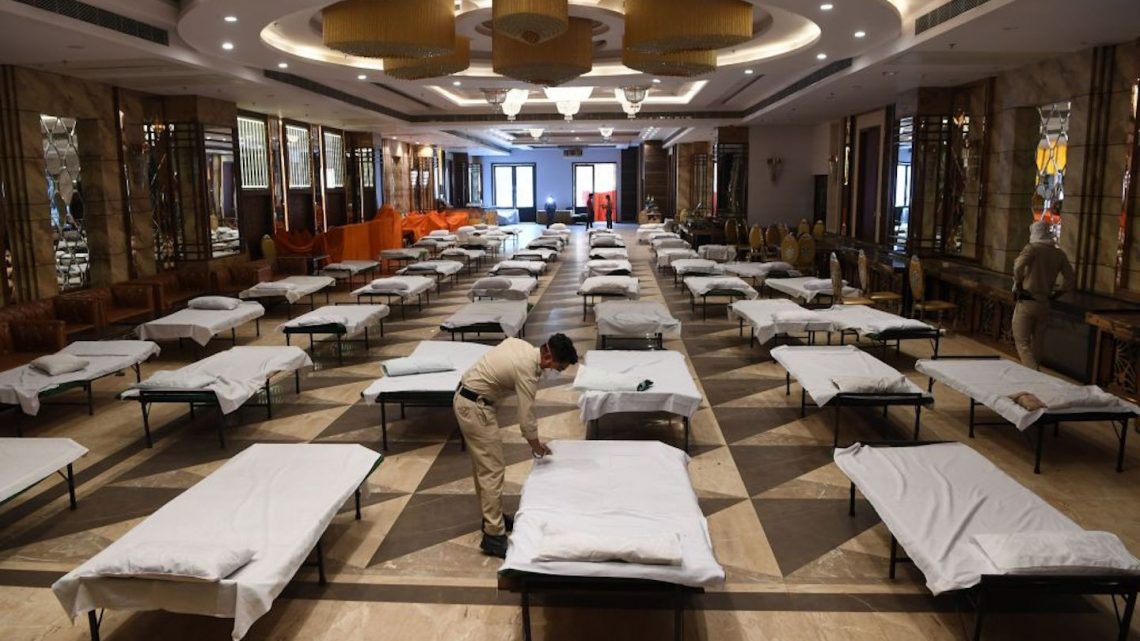
India Is Planning to Build the ‘World’s Largest’ Quarantine Facility
June 18, 2020Anticipating a dramatic surge in COVID-19 cases towards the end of July, India’s capital is planning what is being described as the “world’s largest quarantine facility.” The proposal was announced on June 16 in an attempt to shore up the county's buckling healthcare system.
The new Delhi quarantine facility, to be set up near the North Indian state of Haryana, will be furnished with 10,000 recyclable beds made from cardboard, which provides a less hospitable surface for the virus. Indian doctors have cited findings that SARS-CoV-2 cannot survive on cardboard surfaces longer than about 24 hours.
In the past few days, coronavirus cases have spiked in Delhi from 10,000 to more than 44,000, underlining the city's inadequate supply of hospital beds and drawing attention to healthcare system's ill-preparedness, despite an abundance of overseas warnings.
A few days ago, Delhi’s deputy chief minister Manish Sisodia speculated that the national capital would have to deal with more than 500,000 cases by July 31.
Currently, COVID-19 care wards in Delhi’s hospitals can accomodate 5,974 patients, while outside facilities with oxygen and beds can only take in 344 people.
In May, the Delhi government asked 117 private hospitals to earmark 20 percent of their beds to isolate COVID-19 patients. Throughout the outbreak, private hospitals India have been criticised for charging exorbitant rates to those who can least afford it.
A high-level panel has informed the Delhi government that, for every 100 hospital beds, the city would need 400 more beds in hotels, banquet halls or rest houses in religious places for patients with mild symptoms.
The 10,000-bed facility will be set up at the Radha Soami Spiritual Centre in Delhi’s Chhatarpur. Previously, this centre was being used as a shelter for migrant workers who were stuck in the city during the lockdown.
“This will be treated as a hospital for patients with coronavirus symptoms, and we expect to open in the first week of July,” a spokesperson from the Radha Soami Spiritual Centre, who did not wish to be named, told VICE over the phone.
The South Delhi district magistrate BM Mishra said that this temporary facility would function like 20 mini hospitals with 500 beds each, and staffed with 400 doctors working in shifts. The facility will not be providing ventilators, instead referring patients with severe symptoms to specialty hospitals.
The Delhi Sikh Gurudwara Management Committee (DSGMC) has also offered to convert its gurudwaras [places of assembly and worship for Sikhs] and schools into COVID-19 care centres, each with 850 beds for patients with mild symptoms. Even hotels and banquet halls are now being used to prepare for a predicted surge in patients.
Similarly, Thane district on the outskirts of India’s worst-hit city Mumbai, has also unveiled a 1000-bed temporary hospital specifically for coronavirus patients.
Back in March, India enforced some of the world’s toughest lockdown policies in an attempt to buy time for India’s healthcare system to ramp up their facilities. Many innovative measures were announced, including converting sports stadiums into quarantine facilities, and turning Mumbai's exhibition centres and performance theatres into makeshift clinics. The Indian railway ministry also offered 20,000 train compartments to be used as isolation wards in late March, though the large-scale rollout of these is still yet to happen.
In 2019 the Indian the government informed their Parliament that India only had one doctor for every 1,457 citizens. This, combined with strikes by resident doctors in Mumbai and Delhi goes some distance to explain why India's healthcare system has been so quickly overwhelmed.
“The population of India is too much compared to the number of qualified doctors in the country, and even the corona warriors aren’t getting proper accommodations or salaries,” explained a Dr Arushi Jain, who's filed a public interest litigation with the Supreme Court, complaining there's inadequate quarantine facilities for doctors near hospitals.
She points out that the government of India arbitrarily classified doctors as high and low risk, which she felt was unfair and demotivating for those on the frontlines.
India has also repeatedly been criticised for the dilapidated state of its quarantine facilities, where suspected patients have to share bathrooms and are denied proper food, water, or sanitation.
When faced with a surge in coronavirus cases, many countries around the world have taken cues from the makeshift clinics constricted in China. In the U.S, university housing, convention centres and even parks have been turned into temporary hospitals, while Russia built a clinic on the outskirts of Moscow, seemingly inspired by China’s 1,000 bed hospital in Wuhan. Likewise, the U.K. built the NHS Nightingale hospital in nine days to provide intensive care treatment to coronavirus patients.
Follow Shamani Joshi on Instagram.


